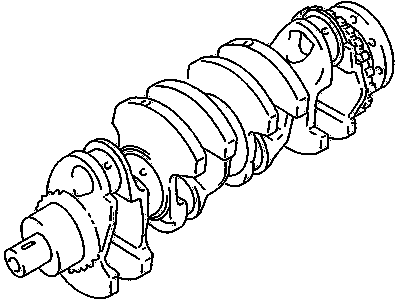
My Garage
My Account
Cart
Genuine Chevrolet Tracker Crankshaft
Crank Shaft- Select Vehicle by Model
- Select Vehicle by VIN
Select Vehicle by Model
orMake
Model
Year
Select Vehicle by VIN
For the most accurate results, select vehicle by your VIN (Vehicle Identification Number).
3 Crankshafts found
Chevrolet Tracker Crankshaft
Each OEM Chevrolet Tracker Crankshaft we offer is competitively priced and comes with the assurance of the manufacturer's warranty for the part. Furthermore, we guarantee the speedy delivery of your orders right to your doorstep. Our hassle-free return policy is also in place for your peace of mind.
Chevrolet Tracker Crankshaft Parts Questions & Experts Answers
- Q: How to remove the crankshaft from the engine on Chevrolet Tracker?A:Engine removal is the only way to remove a crankshaft. The end play should be checked before the removal of the crankshaft. With a stem in line with the crank and touching one of the crank throws, mount a dial indicator on it. Zero the dial indicator upon pushing the crank all to the rear then pry it as far as possible and read from the dial indicator to determine end play. Examine for wear of thrust surfaces in case end play is greater than that specified. If no wear is apparent, new thrust bearings will correct this condition. Feeler gauges can also be used if there is no dial indicator. To check clearance between its front face of thrust bearing and its crankshaft, gently push or pry it to engine front direction (towards you) and slip feeler gauges in between them. SOHC engines must have their main bearing caps checked as they may be marked. From front towards back, these should be numbered consecutively. In case they are not marked, number stamping dies or center punches should be used to mark them. While noting stud bolts positions, gradually loosen and remove main bearing caps by hand; gently separate caps from engine block using soft-face hammer taps. Crankshaft's main bearings do not have caps on DOHC engines but instead block uses "lower crankcase" to hold it in place. In order remove lower crank-case screws have to be taken out according to indicated sequence following which care must be taken due to its weight as the author states . Gently lift out the Crankshaft being mindful of how heavy it is when removing it from an engine bay. The caps need to return into their proper places on an engine block together with bearing inserts located within an engine block so that bolts can be tightened finger tight.













